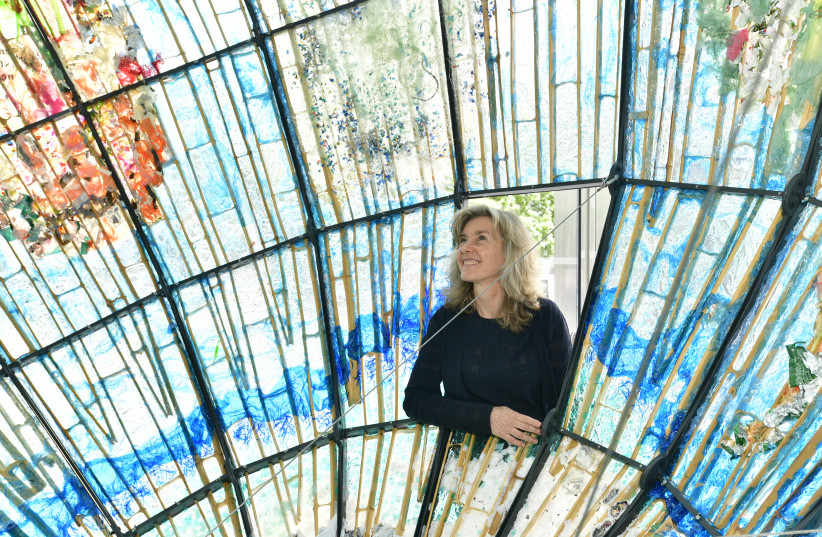A 180-panel art installation depicting planet Earth and composed of plastic waste by Israeli artist Beverly Barkat was installed this week at 3 World Trade Center in Lower Manhattan.
Called “Earth Poetica,” the colorful work portrays regions of the Earth whose continents and oceans are suffocating under growing masses of plastic waste. It was inaugurated on June 5, marking the 50th anniversary of the United Nations World Environment Day.
'Earth looking at Earth in the future'
“Earth Poetica” is a “site of moral agency–an invitation to reflect on how humankind’s actions today will impact tomorrow,” Barkat said in a previous interview. “The sculpture is of the future. It is Earth looking at Earth in the future.”
The vibrant work re-imagines the planet as a giant biosphere made of steel, bamboo and tons of plastic collected from oceans, waterways, forests, etc. Using a soy resin, Barkat worked with the plastic to transform it into a stained glass that shines like precious gems and creates the Earth’s landscape. However, through trapezoid openings intentionally scattered throughout, viewers can peek inside and see the actual trash.
“Earth Poetica is an aesthetic action entangled between the artist’s inner horizon and the world,” said Dr. Raffaella Frascarelli, curator and director of the Nomas Foundation, which provided expert consultation to support the creation of Earth Poetica. “The language of this creation echoes with material and spiritual challenges, raising questions about the radical engagement of the public sphere and a new prospect of post-human citizenship. Above all, this living sculpture shows us the planet as a common good of life.”

Lisa Silverstein, vice chairman of Silverstein Properties, said “Important thought-provoking art like this can enliven our public spaces, enrich our lives, and draw attention to some of the most critical issues we face in the world today.”
Barkat was inspired to make Earth Poetica after watching a documentary on pollution. “There were impoverished children searching for ‘treasure’ among piles of plastic waste on the beach. The image was so strong and has stayed with me,” Barkat recalled in the interview.
“The images haunted me. I asked myself, ‘Is this the beautiful Earth we are leaving for our children? Is this our legacy–planet Earth covered by plastic waste?’”
She then visited her native South Africa, where she saw shores strewn with garbage. The artist began collecting plastic waste, first during her travels for work and then from like-minded individuals, friends and colleagues worldwide. Earth Poetica has plastic from the United States, United Kingdom, South Africa, Taiwan, Japan, Australia and Israel.
During the three years she created the project, her downtown Jerusalem studio was strewn with plastics. Barkat organized and classified the plastics by type and color before using the resin and building the piece. The final work is 13 feet in diameter. Before heading to the World Trade Center, Earth Poetica was on display in Jerusalem since February 2022 at the Gottesman Family Israel Aquarium.
“I am deeply grateful to the Silverstein family – Lisa, Larry and Klara – who embraced Earth Poetica from the outset and are exhibiting it in this significant destination,” Barkat said. “It is exciting that the World Trade Center – itself a symbol of astonishing renewal – is the exhibition space for Earth Poetica, which likewise signals a message of hope and renewal.”
The installation is presented in collaboration with the United Nations Environment Program (UNEP) and joins other works at the center, including those by James Rosenquist, Frank Stella, Jenny Holzer and others.
UNEP says more than 430 million tons of plastic are produced annually. Furthermore, every day the equivalent of over 2,000 garbage trucks full of plastic is dumped into our oceans, rivers and lakes.
